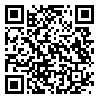1. Friedman HS. Encyclopedia of mental health. 2nd edition. Amsterdam ; Boston: Elsevier; 2016, pp: 216–21.
2. Kokkinos CM, Baltzidis E, Xynogala D. Prevalence and personality correlates of Facebook bullying among university undergraduates. Computers in Human Behavior. 2016;55:840–50. [
DOI]
3. Brito CC, Oliveira MT. Bullying and self–esteem in adolescents from public schools. J Pediatr. 2013;89(6):601–7. [
DOI]
4. Cassidy T. Bullying and victimisation in school children: the role of social identity, problem-solving style, and family and school context. Soc Psychol Educ. 2009;12(1):63–76. [
DOI]
5. Schultz DP, Schultz SE. Theories of personality. Seyed Mohammadi Y. (Persian translator). Tehran: Virayesh Pub; 2014.
6. Barzegar Bafrooei K, Barzegar Bafrooei M, Khezri H. The role of school bonding in the appearance of bullying in junior secondary school in Yazd. Educational Psychology. 2016;12(42):21–40. [Persian] [
DOI]
7. Azhassaran M, Mehdinezhad V, Farnam A. The relationship between empathy, self–efficacy and bullying with the mediating role of parenting styles in students. Journal of Educational Psychology Studies. 2021;18(42):135–110. [Persian] [
DOI]
8. Vervoort MHM, Scholte RHJ, Overbeek G. Bullying and victimization among adolescents: the role of ethnicity and ethnic composition of school class. J Youth Adolesc. 2010;39(1):1–11. [
DOI]
9. Pellegrini AD, Long JD. A longitudinal study of bullying, dominance, and victimization during the transition from primary school through secondary school. British Journal of Developmental Psychology. 2002;20(2):259–80. [
DOI]
10. Pepler DJ, Craig WM, Connolly JA, Yuile A, McMaster L, Jiang D. A developmental perspective on bullying. Aggressive Behavior. 2006;32(4):376–84. [
DOI]
11. Vanderbilt D, Augustyn M. The effects of bullying. Paediatrics and Child Health. 2010;20(7):315–20. [
DOI]
12. Golestan F, Shahani Yeylagh M, Behrozi N, Omidiyan M. The effect of bullying prevention program training on bullying, adjustment and empathy among middle school female students, in Ahvaz. Journal of Cognitive Strategies in Learning. 2017;5(8):183–204. [Persian] [
DOI]
13. Andreoni J, Rao JM, Trachtman H. Avoiding the ask: a field experiment on altruism, empathy, and charitable giving. Journal of Political Economy. 2017;125(3):625–53. [
DOI]
14. van Vliet M, Jong M, Jong MC. Long–term benefits by a mind–body medicine skills course on perceived stress and empathy among medical and nursing students. Med Teach. 2017;39(7):710–9. [
DOI]
15. Ferguson FJ, Austin EJ. Associations of trait and ability emotional intelligence with performance on theory of mind tasks in an adult sample. Personality and Individual Differences. 2010;49(5):414–8. [
DOI]
16. Soleimani E, Moharam Zade H. The effectiveness of social problem solving training on adjustment and self–efficacy in bullying students. Educational Psychology. 2018 Mar 21;14(47):49–73. [Persian] [
DOI]
17. Keyes CLM. Social well–being. Social Psychology Quarterly. 1998;61(2):121–40. [
DOI]
18. Kelley–Gillespie N. Quality of life for older adults, an integrated conceptual model. In: Michalos AC, editor. Encyclopedia of quality of life and well–being research. Dordrecht: Springer Netherlands; 2014. pp: 5340–55. [
DOI]
19. Hahn EA, Cella D, Bode RK, Hanrahan RT. Measuring social well–being in people with chronic illness. Soc Indic Res. 2010;96(3):381–401. [
DOI]
20. Shahbaziyan Khonig A, Hasani O, Mahmoudi A. The relationship between moral and social intelligence with the bullying among high school student. Bioethics Journal. 2018;8(28):7–18. [Persian] [
DOI]
21. Shahbaziyan Khonig A, Hasani O, Soleymani S. The survey of the role of moral and social intelligence in high–risk behaviors of students of Kurdistan university of medical sciences in the 2016–2017 academic year. Journal of Rafsanjan University of Medical Sciences. 2018;17(1):39–52. [Persian] [
Article]
22. Bao Z, Zhang W, Lai X, Sun W, Wang Y. Parental attachment and Chinese adolescents' delinquency: the mediating role of moral disengagement. J Adolesc. 2015;44:37–47. [
DOI]
23. Dortaj F, Masaebi A, Asadzadeh H. The effect of anger management training on aggression and social adjustment of 12–15 year old male students. Journal of Applied Psychology. 2010;3(4):62–72. [Persian] [
Article]
24. Gini G, Pozzoli T, Hymel S. Moral disengagement among children and youth: a meta–analytic review of links to aggressive behavior. Aggress Behav. 2014;40(1):56–68. [
DOI]
25. Yasaminezhad P. Tasir amoozesh hoosh akhlaghi bar masouliat paziri, hamdeli hayajani, akhlagh tahsil va bakhshoudegi beyn fardi danesh amoozan Dokhtar paye sevom maghta'a motevasete [The effectiveness of moral intelligence training on interpersonal forgiveness, emotional empathy, responsibility and academic ethics of female high school students] [Thesis for Master]. [Ahvaz, Iran]: Shahid Chamran University of Ahvaz; 2014. [Persian]
26. Javadinezhad A, Heydari A, Naderi F, Bakhtiyipoor S, Hafezi F. The effectiveness of educating moral intelligence on psychological well–being of the secondary school students. Bioethics Journal. 2018;8(29):53–62. [Persian] [
DOI]
27. Rezapor Mirsaleh Y, Kheradmand T, Shahedi S. Effectiveness of moral intelligence on social performance and behavioral problems. Ethics in Science and Technology. 2018;12(4):48–59. [Persian] [
Article]
28. Pahlavan F, Ebrahiminejad Gh. Determining the effectiveness of moral intelligence training on positive communication with others in high school girls [Internet]. In: World Conference on Psychology and Educational Sciences, Law and Social Sciences at the Beginning of the Third Millennium. Tehran, Iran: Civilica; 2016. [Persian] [
Article]
29. Lee YJ. The effect of children's moral emotions on social competence: focusing on empathy, and sympathy. Korean Journal of Childcare and Education. 2016;12(1):225–44. [
DOI]
30. Olweus D. A profile of bullying at school. Educational Leadership. 2003;60(6):12–7.
31. Jolliffe D, Farrington DP. Development and validation of the Basic Empathy Scale. J Adolesc. 2006;29(4):589–611. [
DOI]
32. Jafari MA, Nooroozi Z, Foolad Chang M. The study of factor structure, reliability and validity of Basic Empathy Scale: Persian form. Journal of Educational Psychology Studies. 2017;14(25):23–38. [Persian] [
DOI]
33. Heidari Gh, Ghanaei Z. The normalization of Well–Being Social Inventory. Journal of Thought & Behavior in Clinical Psychology. 2008;2(7):31–40. [Persian]
34. Rezapour M, Soori H, Khodakarim S. Testing psychometric properties of the perpetration of bullying and victimization scales with Olweus Bullying Questionnaire in middle schools. Safety Promotion and Injury Prevention. 2014;1(4):212–21. [Persian] [
DOI]
35. Sheykholeslami A, Mohammadi N. The effectiveness of moral intelligence skills training on adjustment (emotional, educational, social) in bully students. Journal of Psychologicalscience. 2019;18(77):519–27. [Persian] [
Article]
36. Borba M. Building moral intelligence: the seven essential virtues that teach kids to do the right thing. 1st edition. Jossey-Bass; 2001, pp: 108–54.





